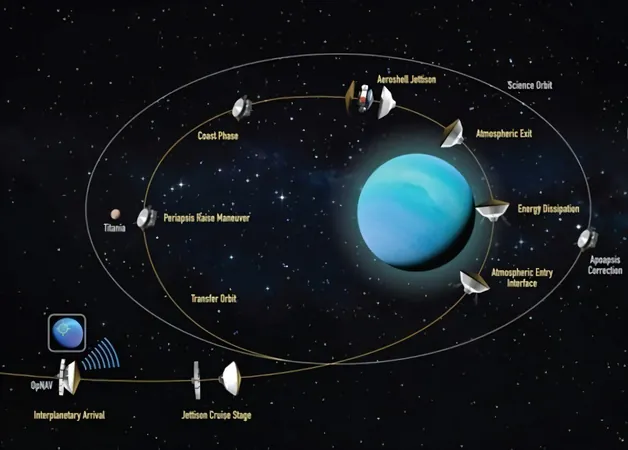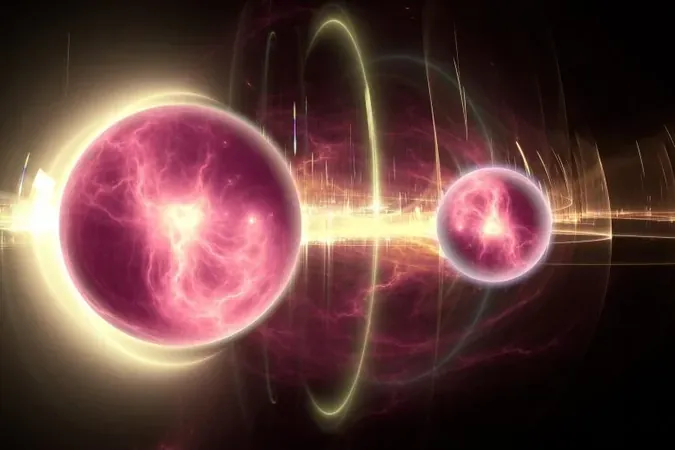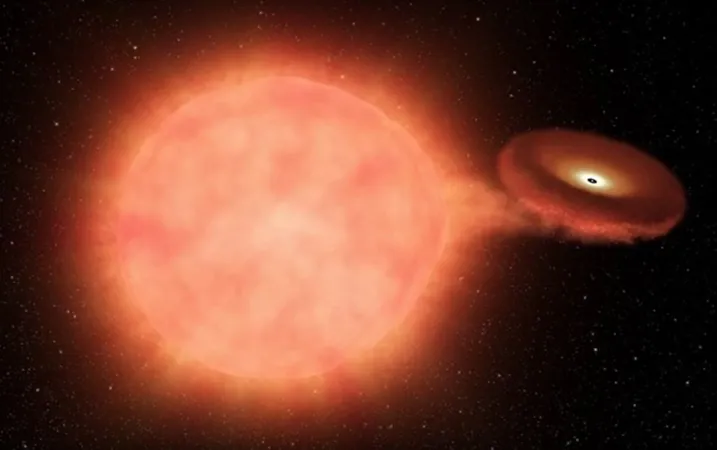
Unlocking the Secrets of Uranus: How to Cut Costs and Time with Aerobraking!
2025-05-16
Author: Amelia
Fast-Tracking Our Journey to the Icy Giants
Reaching Uranus is no small feat—it can take a staggering 13 years to get there, even with gravitational boosts from nearby Jupiter. However, with excitement building around the prospect of sending a probe to explore this icy giant, fresh ideas are being developed to accelerate that journey.
The Game-Changer: Aerocapture Technology
One innovative solution is the use of aerocapture systems to slow down a probe upon arrival at its destination. A groundbreaking paper by Andrew Gomez-Delrio and colleagues from NASA's Langley Research Center suggests that a proposed Uranus Orbiter and Probe (UOP) mission could leverage the same technology that powered the successful Mars Curiosity rover.
Why Aerocapture is a Win-Win
Utilizing an aerocapture system offers tremendous benefits. First, it has the potential to cut the travel time significantly—some estimates indicate the journey could be halved! Additionally, it maximizes payload efficiency, allowing a higher percentage of the spacecraft’s weight to be dedicated to scientific instruments rather than fuel. Moreover, the overall design of the propulsion system can be simplified.
Is There a Catch?
So where’s the catch? Developing an aerocapture system typically spawns years of work and hefty expenses. But fear not—engineers can simply adapt the existing aerocapture tech from Curiosity. Formally known as the Thermal Protective System (TPS), it involves materials like Conformal Phenolic Impregnated Carbon Ablator (CPICA), which expertly withstands the intense heat of atmospheric entry.
Strategic Use of Brake Technology
For the UOP mission, rather than halting in Uranus's atmosphere, the probe will glide through it, using the atmospheric drag as a braking mechanism. The TPS would either descend with the spacecraft or be jettisoned before entering orbit around the planet.
Comprehensive Thermal Management Systems
Gomez-Delrio’s research dives deeper into several critical thermal management systems, incorporating advanced insulations and heat pipes to manage temperature from the spacecraft’s power sources to essential mission hardware.
Reducing Weight, Increasing Potential
Weight is a crucial factor in space missions, and an aerocapture system could do wonders, significantly cutting down the need for heavy fuel and extra tanks. This makes room for innovative designs, enabling the UOP to gather data during its cruise phase or even dispatch multiple Small Next-Generation Atmospheric Probes (SNAPs)!
Funding Hurdles Ahead
However, there's still a mountain to climb before the UOP can make its dream mission a reality. Currently short on funding despite being labeled the top flagship mission in the latest Planetary Decadal Survey, the project’s future remains uncertain. But thanks to initiatives like the one behind this paper, funded by NASA’s Early Career Initiative, the concept keeps evolving, holding hopes of one day unraveling the mysteries of our solar system's enigmatic planets.









 Brasil (PT)
Brasil (PT)
 Canada (EN)
Canada (EN)
 Chile (ES)
Chile (ES)
 Česko (CS)
Česko (CS)
 대한민국 (KO)
대한민국 (KO)
 España (ES)
España (ES)
 France (FR)
France (FR)
 Hong Kong (EN)
Hong Kong (EN)
 Italia (IT)
Italia (IT)
 日本 (JA)
日本 (JA)
 Magyarország (HU)
Magyarország (HU)
 Norge (NO)
Norge (NO)
 Polska (PL)
Polska (PL)
 Schweiz (DE)
Schweiz (DE)
 Singapore (EN)
Singapore (EN)
 Sverige (SV)
Sverige (SV)
 Suomi (FI)
Suomi (FI)
 Türkiye (TR)
Türkiye (TR)
 الإمارات العربية المتحدة (AR)
الإمارات العربية المتحدة (AR)